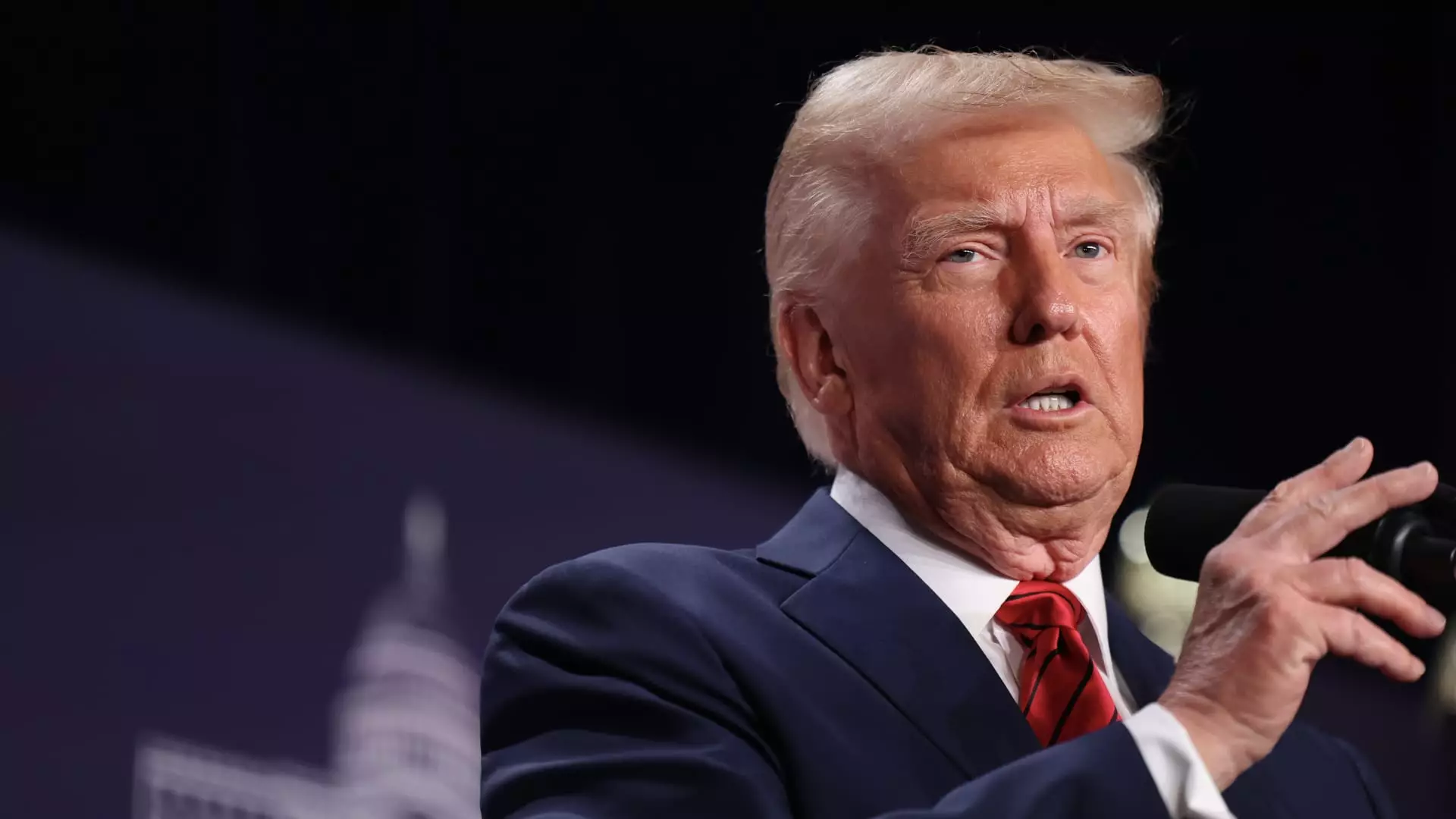The use of tariffs as a tool for economic policy has become a focal point in President Donald Trump’s administration. Since the inception of his campaign, Trump has championed tariffs as a mechanism to bolster American industry and protect domestic jobs. However, recent discussions surrounding significant tariff implementations, particularly on goods from Canada, China, and Mexico, have raised eyebrows among economists and consumers alike. The first set of tariffs is slated to kick in on February 1, with duties of 25% on goods from Canada and Mexico and 10% on goods from China. As these policies take shape, it is imperative to critically analyze their potential economic impact and the broader implications for American consumers and businesses.
Tariffs essentially function as taxes imposed on imported goods, creating an additional financial burden for businesses that rely on foreign products. This tax is transferred down to consumers, often resulting in increased prices for everyday goods. Mary Lovely, a senior fellow at the Peterson Institute for International Economics, argues that it is challenging to identify significant benefits from these tariffs. As U.S. businesses import approximately $1.43 trillion worth of goods from Mexico, Canada, and China, a substantial portion of these costs may inevitably lead to higher prices at the register. This shift indicates that ordinary Americans will feel the brunt of tariff policies, which contradicts the administration’s intention of fostering economic growth.
The backdrop of tariffs is not just a matter of rising costs; rather, it also signals potential reductions in consumer choice. Industry experts warn that as businesses face increasing import taxes, they may opt to restrict the diversity of brands and products available in stores. The reduced competition may lead to fewer options for American consumers, particularly in sectors heavily reliant on imports, such as clothing, electronics, and food. With Canada and Mexico being pivotal sources for a plethora of agricultural products, including vegetables and prepared foods, subsequent restrictions could lead to food price inflation and limited availability of essential items.
A fundamental aspect of Trump’s tariff strategy revolves around potential exemptions for certain commodities. For instance, discussions have emerged regarding the exemption of Canadian oil from tariffs, prompting analysts like Mark Zandi to suggest that such carve-outs may serve as a strategy to moderate consumer backlash. However, this approach could lead to complex regulatory landscapes where the necessity to frequently adjust exemptions may create further ambiguity, frustrating both businesses and consumers. The unpredictability surrounding these exemptions raises concerns about the overall stability of supply chains and market prices.
The administration projects that tariffs will contribute to a booming economy, citing historical job and wage growth during Trump’s first term. However, contrasting perspectives from economists reveal skepticism regarding the tangible benefits of this approach. A notable concern involves the loss of gross domestic product (GDP) resulting from retaliatory measures by trading partners like China, which has a rich history of countering similar economic initiatives. Analysts estimate that a 10% tariff on China could decrease the U.S. economy by as much as $55 billion, while a 25% tariff on imports from Canada and Mexico may result in a $200 billion dip in GDP.
The ramifications of tariffs extend beyond inflated consumer prices; they also have the potential to foster a trade war by prompting foreign nations to retaliate. The specter of escalating tariffs could have long-lasting effects on the global trading environment, jeopardizing the sales of U.S. exports abroad. Interestingly, while certain sectors like domestic manufacturing may see short-term benefits due to reduced competition, the broader economic consequences, including damage to international relationships and employment in tariff-impacted industries, warrant serious consideration.
Finally, the assumption that tariffs will stimulate domestic job growth is fraught with misconceptions. In sectors where tariffs raise production costs, job creation is unlikely to match the number of jobs potentially lost in industries relying heavily on imported materials. The argument, as outlined by Lovely, that one steel job might come at the expense of 80 jobs in industries that use steel as an input illustrates the collateral damage that these policies can create. Economists, therefore, caution against a simplistic view of tariffs as a straightforward solution to economic challenges.
Ultimately, as the U.S. braces for the implementation of these tariffs, the need for a nuanced understanding of economic principles becomes paramount. While the Trump administration paints a picture of prosperous growth, the evidence presented by leading economists suggests a more complex and precarious economic reality. Navigating the unintended consequences of tariffs requires careful policy consideration and a willingness to explore alternative strategies that foster competitiveness without jeopardizing consumer welfare. As consumers grapple with the potential realities of these tariffs, the associated uncertainties point towards a turbulent economic future that begs for thoughtful dialogue and innovative solutions.

